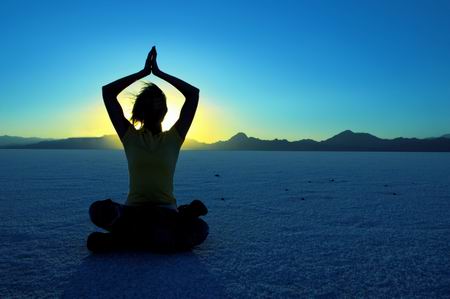 Our internal experience of self—how we feel emotionally— is what others know about us. The internal experience of self may be invisible but actually it shows more than our shoes or our hairdos. How is this possible? How does the invisible show itself?
Our internal experience of self—how we feel emotionally— is what others know about us. The internal experience of self may be invisible but actually it shows more than our shoes or our hairdos. How is this possible? How does the invisible show itself?
The invisible is seen because we constantly communicate our inner self to others through our behaviors and our interactions.
According to Ayurveda and quantum mechanics the underlying reality of the human mind-body is a seamless pattern of energy. And, since we are energetic beings, the basis of our communication is an energy exchange. Through this subtle exchange we pick up on the essence of each other. At the same time, actual words and interactional patterns are concrete illustrations of our internal feeling state.
Family therapists have always known that children are deeply influenced by the feelings of their parents. Resentments, anxieties, pressures and guilt are communicated through interactional patterns. Emotions are transmitted through waves formed by words.
Words form communication patterns and these patterns are a distinct and recognizable behavior.
For instance, anxiety is often transmitted through too frequent correction. Over-correcting simply makes a child anxious about him or herself. Guilt often comes through by giving in instead of sticking with an initial disciplinary action or saying “no.” Pressure can show its unattractive head through minor or major blow-ups and oftentimes by over-doing.
Sometimes parents believe they are hiding anger but children know that behind an icky sweet demeanor there is an angry Mom or Dad. No one, not even the smallest child is easy to fool! The physique may be tiny but the child can detect the meaning of a raised eyebrow, a downturned look or a slouched posture. At the same time, there is a feedback loop between behaviors and emotions. They enhance and encourage each other for both good and bad.
Negative emotions can cover the heart, alter our behavior and damage our health. Our behavior can be indicative of our emotions but our behavior also influences our emotions. If we pay attention to our communication we can consistently behave in a positive manner and in so doing have a beneficial effect on our health and our emotions.
Ideally we wish to always feel at our best and to have all of our behaviors come from this wellspring of good will. But, our behaviors deeply affect how we feel. With this is mind Ayurveda offers us “Behavioral Rasayanas.” The rasayanas might seem like common sense, but it is always helpful to be reminded of things we might already “know” but are easily forgotten.
Rasayana is a Sanskrit word that means ‘that which supports rasa.’ ‘Rasa’ is considered to be a bodily tissue that supports all other tissues. Most Rasaynas are herbal formulas that promote general health by increasing resistance to disease, activating tissue repair mechanisms and arresting or reversing the deterioration associated with aging. However, behavioral rasayanas deal with the mind’s influence on the body in a systematic way: they prescribe behaviors that elicit health promoting biochemical effects. These are valuable both for prevention and as adjuncts to treatments. They include such traditional virtues as moderation and respect for teachers and elders, and such emotions as love and compassion. They exclude such behaviors shown as moods indicative of anger, negativity and violence as these behaviorsdamage health. One result of practicing the behavioral rasayanas is that the limbic system is metabolizing positive emotions far more often, and negative ones far less so.
Practice makes perfect. You might not feel loving but if you practice behaving in a loving manner you will begin to recognize yourself as a loving person and the feeling of love will become yours. Pretend until it becomes real!
The behavioral rasayanas reflect traditional teachings in many cultures: this reflects the insight of long-lived traditions into the principles upholding human health.
In other words, if you don’t feel great you do not have to communicate your feelings through negative words nor do you need to act out your feelings. On the contrary, if you behave well you will feel better. You should never speak or act harshly to another human being. Behavior and emotions are connected and they feed on each other. Behaving in a health promoting way is actually protective of your health.
Following are the Ayurvedic Behavioral Rasayanas. Read the list—think of these as not being extreme but as subtle behaviors and as ways of communicating your inner self to others. Reflect on how to help yourself to be happier and healthier through something so easy to control: your behavior—-your communication!
Behaviors and Attitudes to be maximized:
Love, Compassion, Speech that uplifts people, (especially children!), Cleanliness, Charity, Religious observance, Respect for teachers and elders, Being positive, Moderation and self-control, especially with regard to alcohol and sex, Simplicity
Behaviors and Attitudes to be avoided.
Anger, violence, harsh or hurtful speech, conceit, speaking ill of others behind their backs, egotism, dishonesty
Emotions do not Exist in a Vacuum
Emotions do not exist in a vacuum. They are a reflection of our overall health, of our lifestyle, of our experience and of our relationships and they in turn affect all of the above. Kindness, love and giving come from an open heart and these emotions with their corresponding behaviors help to create a healthier and happier mind-body. At the same time we can create a healthier and happier physiology by developing awareness of our communication patterns; our behaviors.
Sandra and I wish you the enhancement of health and happiness that comes with viewing your role in your relationships through a wide-angle lens!











